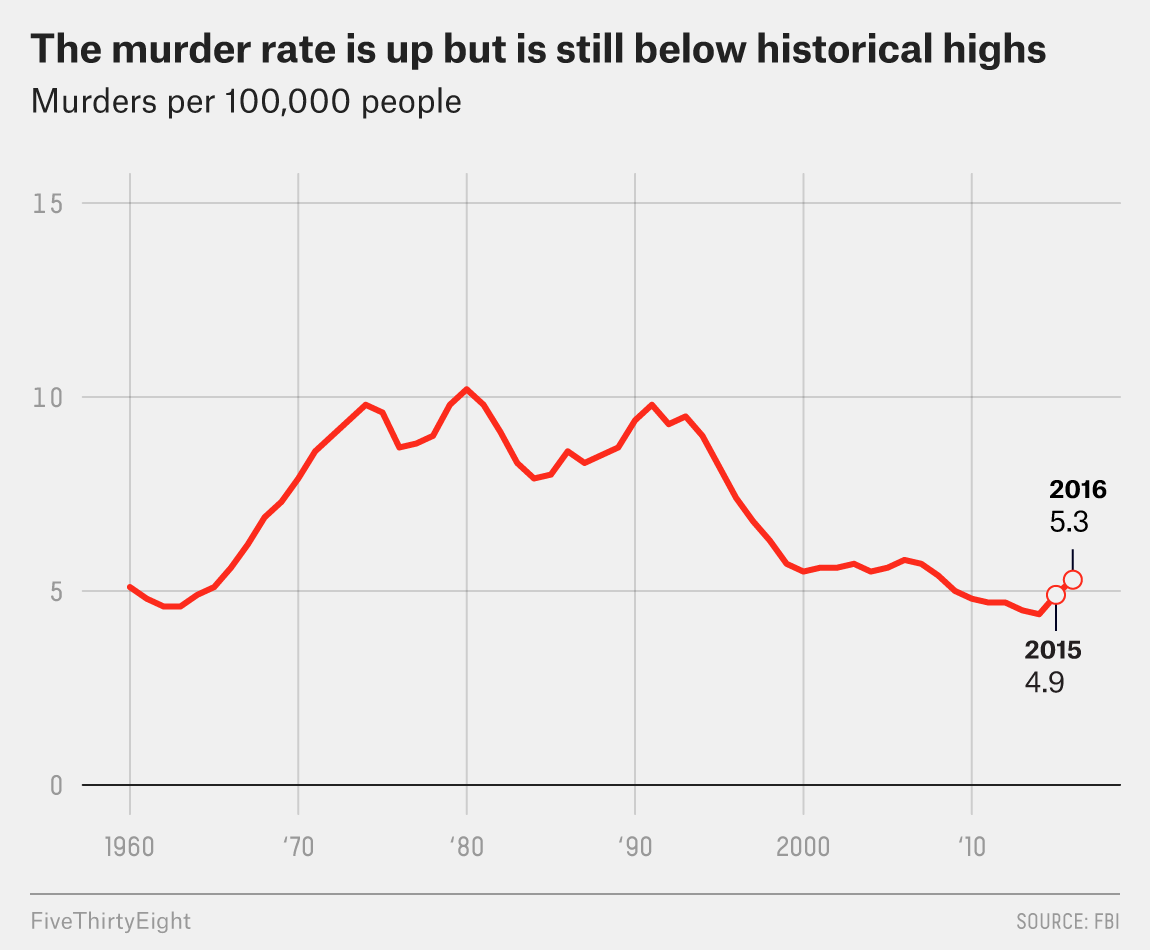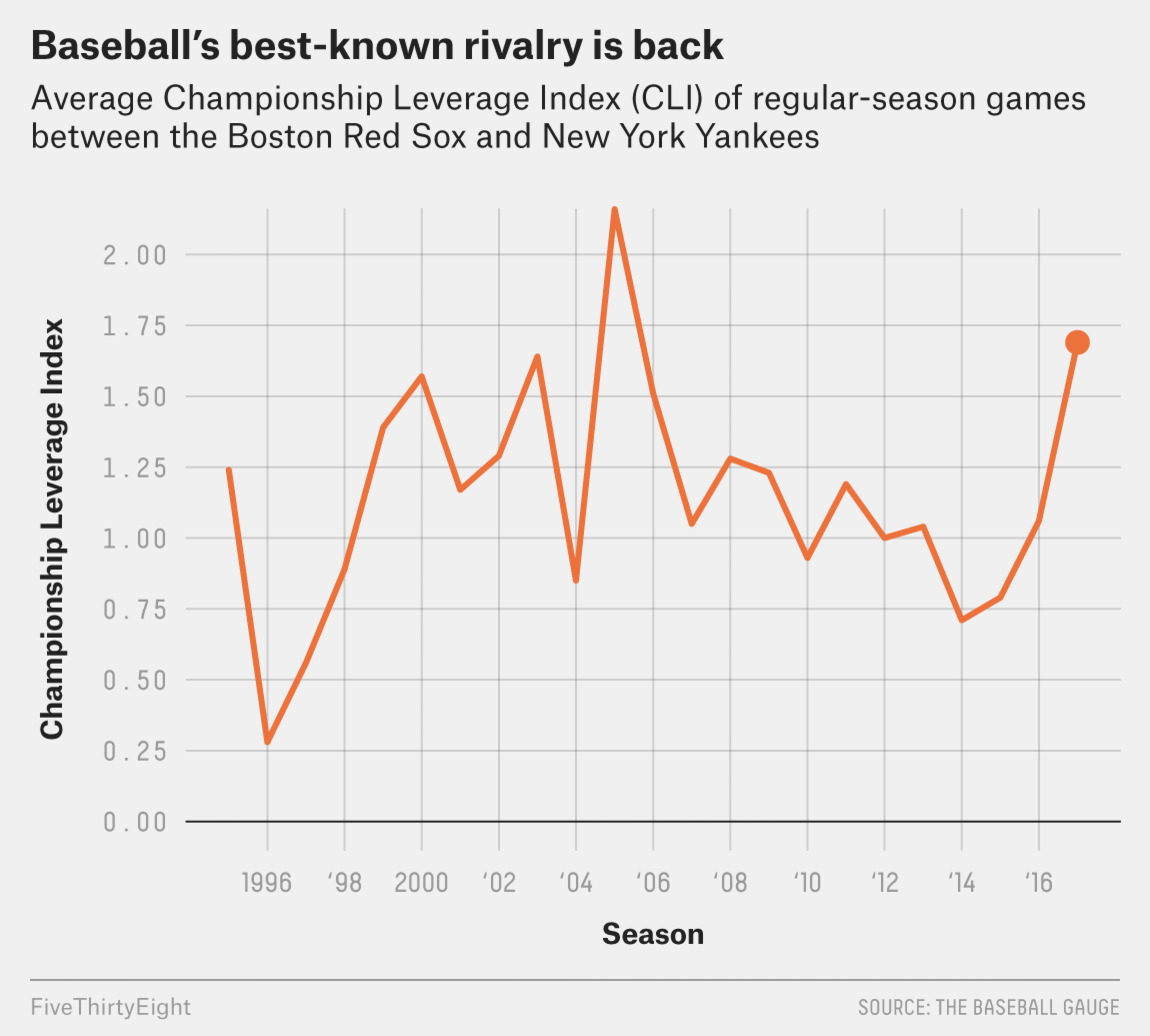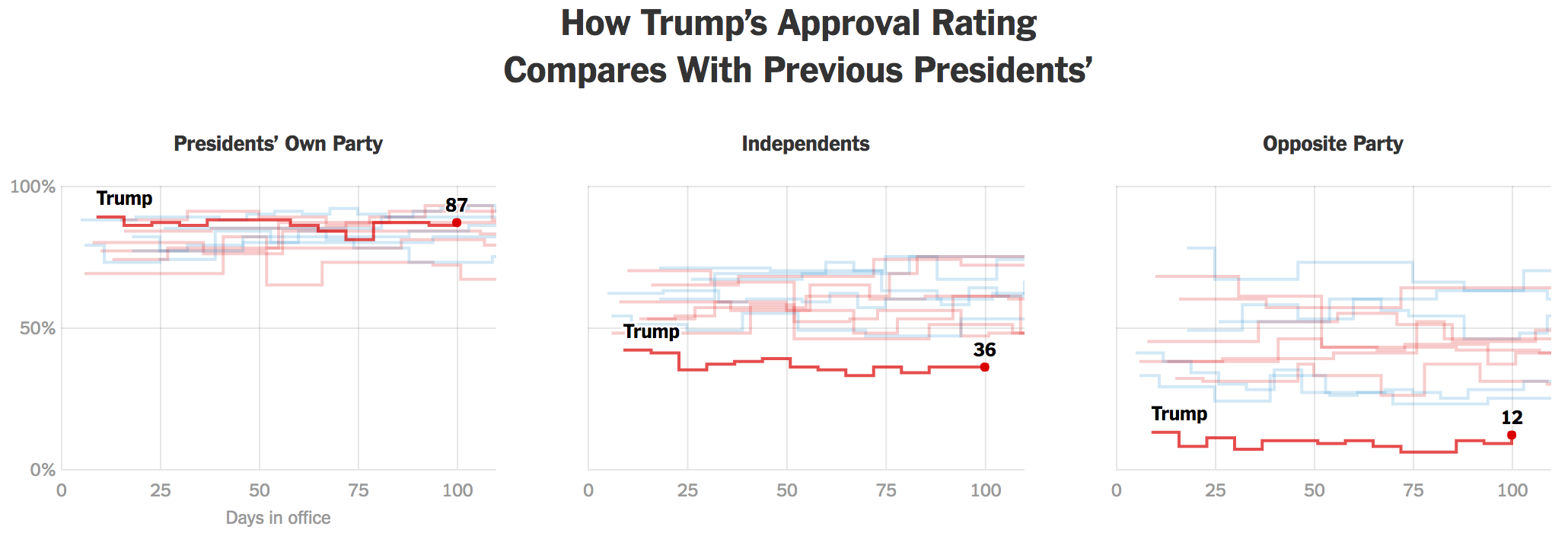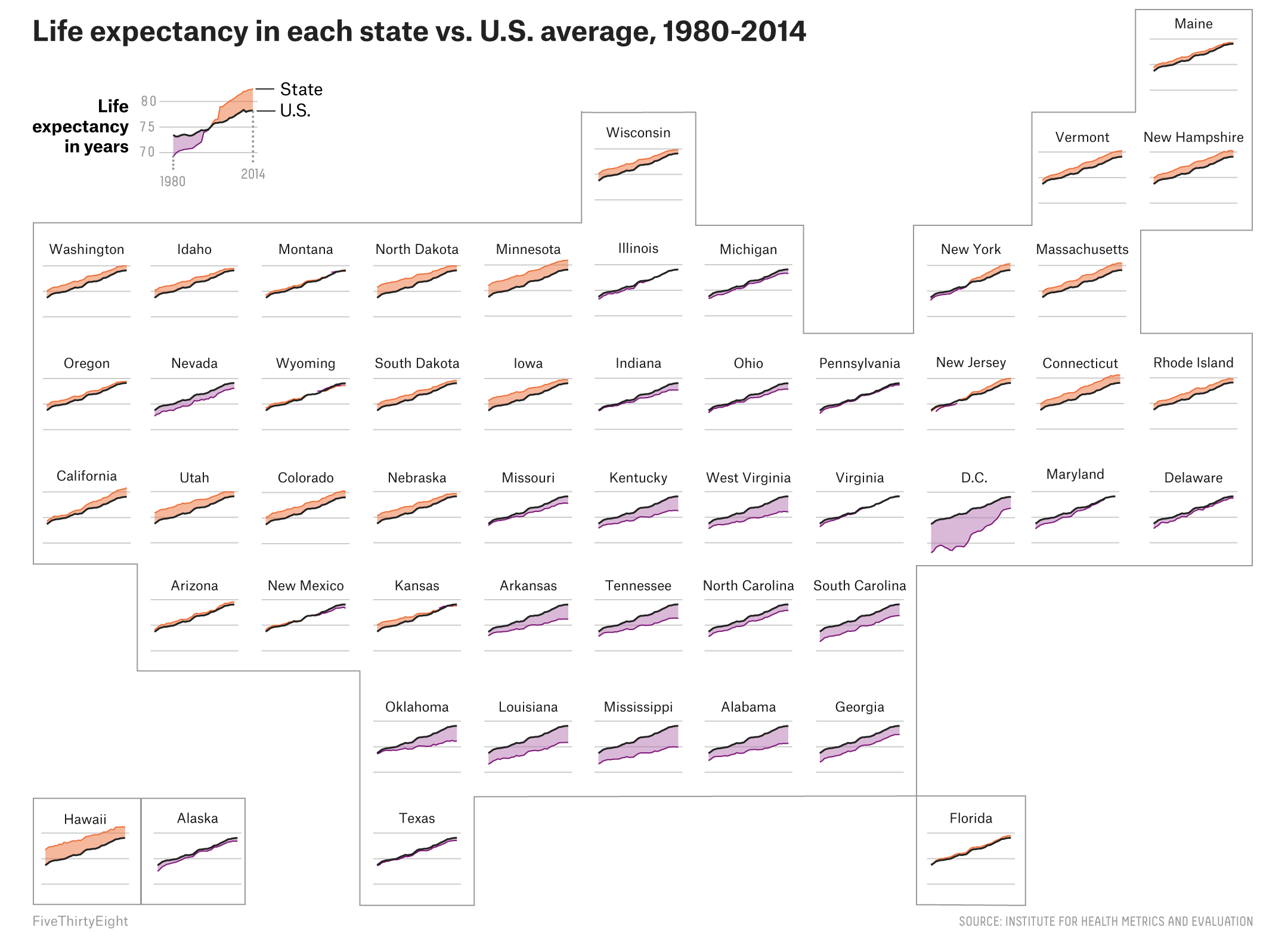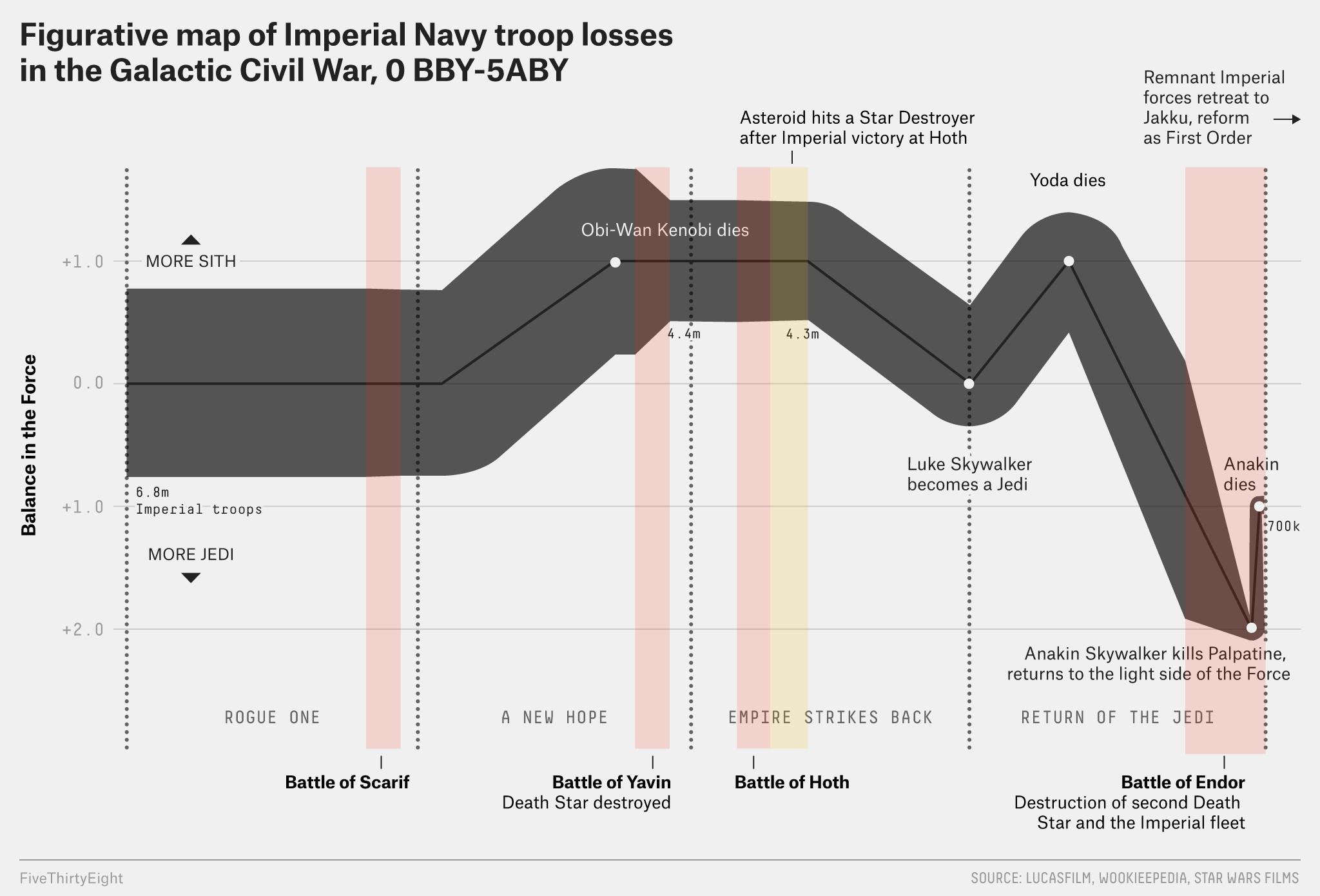I rarely watch American football. But I do like charts about it. So today’s post looks at a piece from Benjamin Morris who explored the scenarios in which a team should opt for the two-point conversion. For those of you who know even less about American football, you can attempt such a conversion after your team scores a touchdown. More often than not your team will go for the far safer and more assured one-point conversion, which if made makes a touchdown of seven points.
It turns out that teams should probably be looking for those two points a wee bit more often than they presently do. And to help teams figure that out, Morris made a small multiple chart looking at many different scenarios.
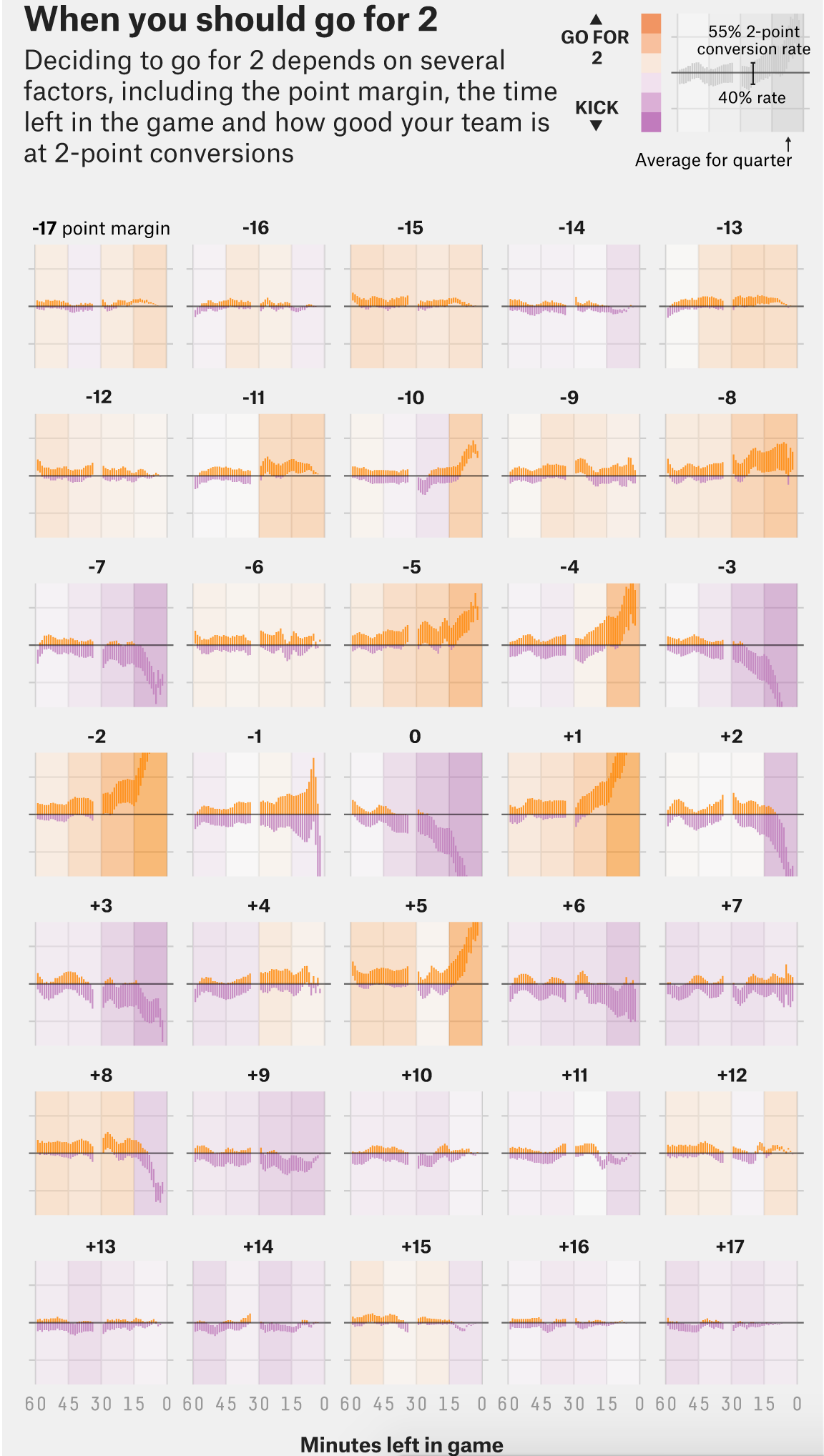
Credit for the piece goes to Benjamin Morris.

